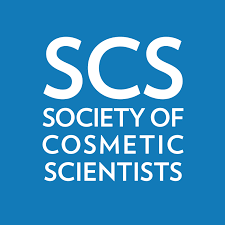Body Care Cosmetic Base Formulation
At Cosmetic Scientist, we empower our customers with a variety of Body Care Base formulas crafted by expert cosmetic scientists, allowing them the freedom to create their own unique formulations. Each formula is accompanied by detailed information on where to source the necessary raw materials within the UK, ensuring a seamless procurement process. Additionally, we provide clear, step-by-step instructions on how to transform these base formulas into finished products. To further support our customers, we offer a complimentary 30-minute consultation call to address any questions or provide guidance on the formulation process. Whether you're a seasoned formulator or just starting, we are here to assist you in bringing your cosmetic creations to life. Call to Book for an introduction call 0207 6327557.


Starting your own cosmetic crafting journey can be both exciting and overwhelming, and using Body Care base cosmetic formulation is often the best option for newcomers. These formulations provide a solid foundation, allowing crafters to experiment with textures, scents, and colours without getting lost in the complexities of creating products from scratch. By beginning with established bases, you can focus on enhancing your creations with personal touches, like essential oils or natural extracts, helping to hone your skills while minimising the risk of unwanted reactions. Additionally, using base formulations helps maintain consistency in your products, which is essential when testing new ideas or sharing with friends and family. Ultimately, this approach not only simplifies the crafting process but also boosts confidence, encouraging enthusiasts to explore their creativity in the world of cosmetics.
Memberships




Cosmetic scientists play a vital role in developing body care formulations that cater to the diverse needs of consumers. The process of formulating these products involves a blend of creativity, scientific knowledge, and an understanding of consumer preferences. Here's a comprehensive overview of how cosmetic scientists formulate various body care products, accompanied by relevant examples.
1. Research and Development
The first step in creating body care formulations is thorough research. Cosmetic scientists familiarise themselves with current market trends, consumer needs, and existing products. This phase often includes:
- Market analysis: Understanding what consumers are looking for in body care products, such as natural ingredients, specific benefits (e.g., moisturising, anti-ageing), and ethical considerations (e.g., cruelty-free, vegan).
- Ingredient research: Identifying ingredients that are effective and safe for the skin. This may include natural oils, botanical extracts, synthetic compounds, and preservatives.
2. Defining the Product Purpose
Every formulation starts with a clear purpose. Cosmetic scientists define what the product aims to achieve. For example:
- Moisturising lotion: Designed to hydrate and nourish the skin.
- Exfoliating scrub: Aims to remove dead skin cells and promote smoother skin.
- Anti-cellulite cream: Targets the appearance of cellulite by improving skin texture and tone.
3. Selecting Ingredients
Once the product's purpose is defined, the next step is to select the appropriate ingredients. Here is how a cosmetic scientist might approach this:
- Base: These are the primary components of the formulation. For a body lotion, water or aloe vera gel may serve as the base.
- Active ingredients: These are responsible for the targeted effects. For example, hyaluronic acid for hydration, salicylic acid for exfoliation, or caffeine for its potential anti-cellulite properties.
- Emollients and humectants: Ingredients like shea butter or glycerin help retain moisture and create a smooth texture.
- Preservatives: Essential for ensuring product safety and longevity by preventing microbial growth. Common preservatives include phenoxyethanol and ethylhexylglycerin.
4. Creating Formulation Prototypes
After selecting the ingredients, scientists create several prototypes. They mix the components in different ratios to observe how they react and perform. Key activities include:
- Texture testing: Ensuring the product feels pleasing to the touch; for instance, lotions should be smooth and creamy, while scrubs might be grainy and exfoliating.
- Stability testing: Ensuring the formulation maintains its integrity over time. This includes testing for colour changes, separation, and scent stability.
5. Sensory Evaluation
To ensure the final product appeals to consumers, sensory evaluations are vital. Cosmetic scientists often conduct tests to assess:
- Fragrance: The scent should be pleasant and in line with consumer preferences.
- Absorption and feel: Testing how quickly a lotion absorbs into the skin and whether it leaves a greasy residue.
- Visual appeal: The colour and consistency should be visually attractive.
6. Regulatory Compliance
Cosmetic formulations must comply with regulatory standards. This means verifying that all ingredients are permissible for use in cosmetics and ensuring that products meet safety and efficacy claims. Cosmetic scientists work closely with regulatory experts to navigate these requirements.
7. Conducting Safety and Efficacy Testing
Before a product can be launched, it undergoes rigorous testing:
- Dermatological testing: To ensure the product is safe for skin application.
- Clinical trials: In some cases, especially for specialised products (e.g., anti-ageing or acne treatments), clinical trials may be necessary to prove efficacy.
8. Packaging and Labelling
Once a formulation passes testing, attention turns to packaging. The chosen materials should protect the product's integrity, be user-friendly, and appeal to consumers. Cosmetic scientists also ensure that labelling accurately reflects the product's ingredients, benefits, and usage instructions, complying with regulatory standards.
Examples of Body Care Formulations
1. Moisturising Body Lotion:
- Key Ingredients: Water (base), glycerin (humectant), shea butter (emollient), vitamin E (antioxidant), and preservative.
- Benefits: Keeps skin hydrated, enhances elasticity, and protects against environmental stressors.
2. Exfoliating Body Scrub:
- Key Ingredients: Sugar (exfoliant), coconut oil (moisturiser), essential oils (fragrance), and vitamin C (brightening agent).
- Benefits: Removes dead skin cells, leaves skin smooth, and adds a natural glow.
3. Sun Protection Cream:
- Key Ingredients: Broad-spectrum sunscreen agents (e.g., zinc oxide or avobenzone), aloe vera (soothing), and antioxidants (e.g., green tea extract).
- Benefits: Provides sun protection, soothes the skin, and fights free radicals.
4. Anti-cellulite Cream:
- Key Ingredients: Caffeine (to stimulate circulation), retinol (to improve skin texture), and menthol (to invigorate the skin).
- Benefits: Reduces the appearance of cellulite, improves skin firmness, and enhances overall texture.
Conclusion
Formulating body care products is a complex yet rewarding process that requires a blend of scientific expertise and creative flair. Cosmetic scientists meticulously navigate each step, from research and ingredient selection to testing and compliance, to create products that meet consumer needs and enhance their beauty and skincare routines. The result is a wide array of body care formulations designed to nourish, pamper, and protect the skin.
Address
Cosmetic Scientist C/O Harley St Cosmetic Ltd
85 Great Portalnd St, London W1W 7LT
Contacts
Contact@CosmeticScientist.com
Tel +44 0207 6327557
Subscribe to our newsletter
